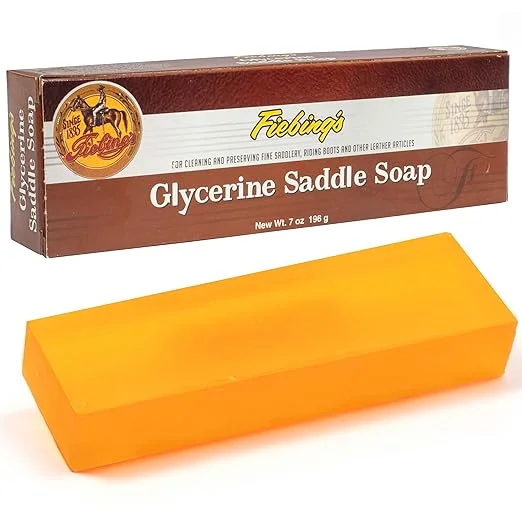Saddle care is crucial for maintaining the beauty and longevity of your saddle. Proper saddle care preserves its lifespan and ensures it remains comfortable for both you and your horse. Regular saddle care also prevents issues that can arise from neglect.
Dirt, sweat, and grime not only dull your saddle’s appearance but they can cause the leather to wear out prematurely. Cleaning your saddle really doesn’t take long and is totally worth it!
Neglect a saddle, and you’ll notice not only a decline in its appearance but also its functionality. Think about it like your favorite pair of shoes—a bit of care goes a long way, you’re not gonna get all dressed up and put a pair of dirty shoes on right? Regular maintenance helps protect your investment, with proper maintenance, your saddle will stay in top shape ride after ride.
And let’s not forget about mold and mildew—they can grow on your saddle if it’s not cleaned and stored properly!
In this guide, we’ll walk you through the step-by-step process of cleaning and conditioning your Western saddle to preserve its quality and ensure a comfortable ride. Whether you’re a seasoned rider or just starting out, these simple yet effective techniques will help extend the life of your saddle and keep it in peak condition.
Step-by-Step Guide to Thoroughly Clean Your Saddle
Getting the right cleaning tools together is a must. Think soft brushes, (toothbrush is also handy)sponges, saddle soap, and a few clean towels. You wouldn’t wash your car with a dirty rag, same logic applies here.
Start by giving your saddle a gentle once-over with a soft brush or cloth to remove dust and any loose dirt. Get in to those awkward areas with the toothbrush. This step might seem simple, but it helps prevents scratches during the deeper cleaning.
It’s time to grab the saddle soap. Use a reputable brand like Fiebing’s Saddle Soap
A traditional cleaner that removes embedded dirt and grime while conditioning the leather to keep it supple. Regular use can extend the life of your saddle. Apply with a damp sponge, working it into a lather on the leather. This helps lift away dirt and grime that may have seeped into the surface. Be gentle—we don’t want to scrub off the natural leather oils.
After a soapy scrub, make sure to get rid of any soap residue. Use a damp cloth to wipe it clean. Skipping this can lead to build-up, which will dry out and damage the leather over time.
https://www.youtube.com/watch?v=g_oDJhwVKFI
Conditioning Your Western Saddle: Promoting Longevity and Appearance
Conditioning is an essential step that keeps your saddle’s leather in top-notch condition. Undernourished leather is like parched soil, prone to cracks and wear. Conditioning adds moisture and keeps the leather flexible, helping to prevent cracking and dryness.
Not all conditioners are created equal, so pick one that’s suitable for your saddle’s leather. Avoid any with alcohol or silicone—they might promise a quick shine, but they can dry out the leather in over a period of time. So again use a reputable brand like Bickmore Bick 4 Leather Conditioner
Applying conditioner is a straightforward task. Use a clean, soft cloth to rub a small amount into the leather, focusing on areas most exposed to wear. Let it soak in, nourishing the fibers and enhancing the leather’s natural gloss.
How often should I condition ?
That depends on your saddle’s use and exposure to elements. Generally, conditioning every few months keeps it supple and protected. If you ride often or in harsher environments, you might need to do it a bit more frequently.
Oiling your Western saddle is a crucial part of maintenance, but it should be done only when necessary to avoid over-oiling, which can weaken the leather. Here’s when you should oil your saddle:
How Often Should I Oil My Saddle?
When the Leather Feels Dry or Stiff
- Leather that feels brittle or has lost its flexibility needs conditioning to restore suppleness. Dryness can occur from exposure to sun, heat, or lack of regular care.
After a Thorough Cleaning
- Cleaning with saddle soap or leather cleaner can strip some of the natural oils from the leather. Applying oil afterward replenishes these oils and ensures the leather remains soft and pliable.
Before Storage
- If you’re storing your saddle for an extended period, oiling it beforehand can help prevent drying and cracking during storage.
When Exposed to Harsh Weather
Saddles that have been exposed to rain, snow, or extreme heat can lose moisture. Oil the saddle after it dries completely to prevent the leather from cracking or becoming stiff.
Annually or Semi-Annually
- For regular maintenance, oiling your saddle once or twice a year is sufficient if the saddle is used under normal conditions.
How to Oil Your Saddle
- Clean First: Always clean the saddle thoroughly before oiling to remove dirt and debris.
- Use Appropriate Oil: Use a high-quality leather oil, like neatsfoot oil or a specialized saddle oil.
- Apply Sparingly: Use a soft cloth or sponge to apply a light coat of oil evenly, avoiding excessive application.
- Let It Absorb: Allow the oil to penetrate the leather for several hours or overnight.
- Buff Excess: Wipe off any excess oil with a clean, dry cloth.
By oiling only when necessary, you ensure your saddle remains in good condition without becoming over-saturated.
Expert Tips and Common Mistakes to Avoid: Keeping Your Saddle in Top Shape
When it comes to saddle care, avoiding common mistakes saves time and money. One big no-no is over-saturating the leather to the point it becomes waterlogged, which can cause stretching and permanent damage.
Consistently check all parts of your saddle. Look for wear and tear in areas like the billet straps and stirrup leathers. Catching issues early prevents small problems from becoming costly repairs.
Where you store your saddle matters just as much as how you clean it. Humidity is leather’s enemy, leading to mold and mildew. A cool, dry room with good air circulation is ideal.
It might be tempting to clean and condition your saddle too often, but overdoing it can actually harm the leather by stripping away its natural oils. Instead, check your saddle every month and give it the care it needs when it’s due.
Also, remember that not all leather is the same. Different types of leather need different care. Take some time to learn about your saddle’s brand and material—some might need special products or techniques to keep them in top shape.
Reassembling your saddle after cleaning is usually a breeze. Make sure everything is tightened and adjusted appropriately before you use it again. A final check ensures you’ve not missed any spots and that all parts are in place.

